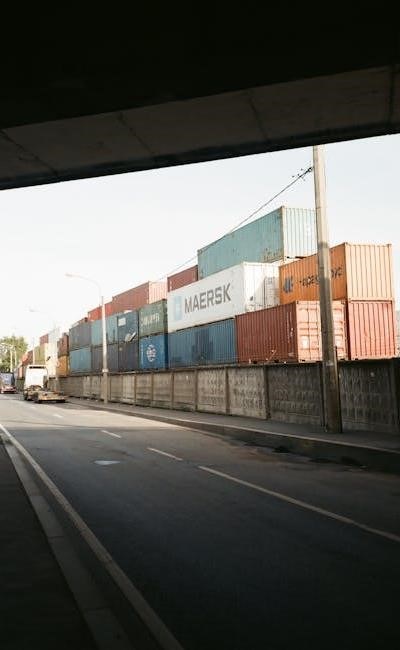
The proliferation of ‘CC’ shops – characterized by rapid turnover of inexpensive consumer goods – presents a complex challenge to environmental protection. While offering affordability, their business model often prioritizes volume over longevity, significantly impacting our planet. This initial assessment explores the inherent environmental impact stemming from this retail phenomenon, focusing on the immediate consequences of mass consumption and the need for greater environmental awareness. The sheer scale of operations necessitates a thorough investigation into their ecological footprint and potential for adopting sustainable practices.
The Rise of ‘CC’ Shops and Initial Environmental Impact
The recent surge in popularity of ‘CC’ shops – retailers offering a wide array of products at extremely low price points – is inextricably linked to evolving consumer habits and globalized supply chain sustainability challenges. Initially conceived as a means to provide accessible goods, their rapid expansion has unveiled a considerable environmental impact. This impact isn’t solely attributable to the products themselves, but also to the logistical network required to maintain constant stock replenishment.
A key factor is the emphasis on disposability. Products are frequently designed for limited lifespans, encouraging frequent replacement and fueling a linear ‘take-make-dispose’ system. This contrasts sharply with principles of a circular economy. The sheer volume of goods moving through these stores necessitates extensive packaging waste, often utilizing non-biodegradable products and contributing to landfill overflow. Furthermore, the demand for low costs often leads to responsible sourcing concerns, potentially impacting ecosystems and communities in production regions.
The transportation of goods, frequently from distant manufacturing hubs, generates significant carbon emissions, exacerbating climate change. While individual items may seem inexpensive, the cumulative environmental footprint across the entire product lifecycle is substantial. Early assessments indicate a need for greater scrutiny regarding energy efficiency within their operations and a commitment to minimizing their overall contribution to pollution control issues. The lack of transparency regarding materials and manufacturing processes hinders comprehensive evaluation and impedes genuine environmental stewardship.
Waste Generation and the Linear ‘Take-Make-Dispose’ Model
‘CC’ shops fundamentally operate within a linear ‘take-make-dispose’ economic model, inherently generating substantial waste reduction challenges. The low cost and perceived disposability of products actively discourage repair or long-term use, accelerating the cycle of consumption and discard. This contrasts sharply with sustainable practices focused on durability and longevity. The resulting waste stream overwhelms existing recycling programs, particularly given the complex material compositions of many items, hindering effective resource recovery.
A significant portion of the waste originates from product packaging – often excessive and utilizing problematic materials like non-recyclable plastics. This contributes directly to packaging waste accumulation in landfills and marine environments. The emphasis on novelty and rapidly changing inventory further exacerbates the problem, as perfectly functional items are frequently replaced by newer versions, adding to the volume of discarded goods. This cycle undermines conservation efforts and places immense strain on waste management infrastructure.
The lack of incentives for product return or refurbishment reinforces this linear model. While some retailers offer limited take-back schemes, these are often insufficient to address the scale of the waste generated. Furthermore, the prevalence of mixed materials in product construction complicates recycling programs, requiring costly and energy-intensive separation processes. A shift towards eco-friendly materials and design for disassembly is crucial to mitigate this issue. Addressing this requires a fundamental rethinking of the entire product lifecycle and a move towards a more circular approach, prioritizing renewable resources and minimizing carbon copy impacts.
The Illusion of Green: Examining ‘Greenwashing’ and Eco-Labels
Many ‘CC’ shops engage in practices that can be categorized as greenwashing – conveying a false impression of environmental responsibility. This often manifests as superficial green initiatives, such as marketing campaigns highlighting minimal recycling programs while overlooking the broader environmental impact of their supply chains and product designs. The use of vague or unsubstantiated claims about eco-friendly materials is also prevalent, misleading consumers into believing products are more sustainable than they actually are.
The proliferation of eco-labels further complicates the issue. While some labels represent genuine third-party verification of sustainable practices, others lack rigorous standards or are self-declared, offering little assurance of environmental integrity. Consumers often struggle to differentiate between credible and misleading labels, making informed ethical consumption choices difficult. This lack of transparency undermines trust and hinders the effectiveness of market-based incentives for sustainability.
Furthermore, the focus on isolated ‘green’ attributes – such as using a small percentage of recycled content – can distract from the overall unsustainable nature of the business model. This selective disclosure creates an illusion of environmental stewardship without addressing fundamental issues like excessive consumption, short product lifespans, and the generation of vast amounts of packaging waste. True sustainability requires a holistic assessment of the entire supply chain sustainability, including responsible sourcing of raw materials, pollution control measures, and efforts to reduce carbon emissions. A critical evaluation of marketing claims and a demand for greater transparency are essential to combat greenwashing and promote genuine environmental protection.
The Role of Regulation and Ethical Consumption in Driving Change
Moving Towards Sustainability: Opportunities for Improvement
Significant opportunities exist for ‘CC’ shops to mitigate their environmental impact and transition towards more sustainable practices. Implementing robust waste reduction strategies is paramount, moving beyond superficial recycling programs to embrace a circular economy model. This includes designing products for durability, repairability, and eventual disassembly for component reuse, extending the product lifecycle and minimizing landfill waste. Investing in biodegradable products and actively seeking plastic alternatives for packaging are crucial steps.
A fundamental shift in supply chain sustainability is also necessary. Prioritizing responsible sourcing of materials, ensuring fair labor practices, and reducing transportation distances can significantly lower their ecological footprint. Embracing renewable resources and improving energy efficiency throughout their operations – from store lighting to logistics – are vital. Furthermore, adopting carbon copy strategies from leading sustainable retailers, focusing on transparency and accountability, can build consumer trust.
‘CC’ shops could also incentivize ethical consumption by offering discounts for returned items, promoting product repair services, and investing in conservation efforts. Exploring innovative business models, such as product rental or subscription services, could reduce overall consumption. Demonstrating genuine corporate social responsibility, rather than merely engaging in greenwashing, is essential. Ultimately, a commitment to environmental stewardship, driven by proactive environmental awareness and adherence to evolving environmental regulations, is key to transforming these retailers into agents of positive change and reducing carbon emissions.




I found this article to be a compelling overview of a growing environmental issue. The author effectively highlights the tension between affordability and sustainability. The point about packaging waste is particularly strong – it’s a very visible consequence of the
This is a really insightful initial assessment. The article clearly articulates the core problem with